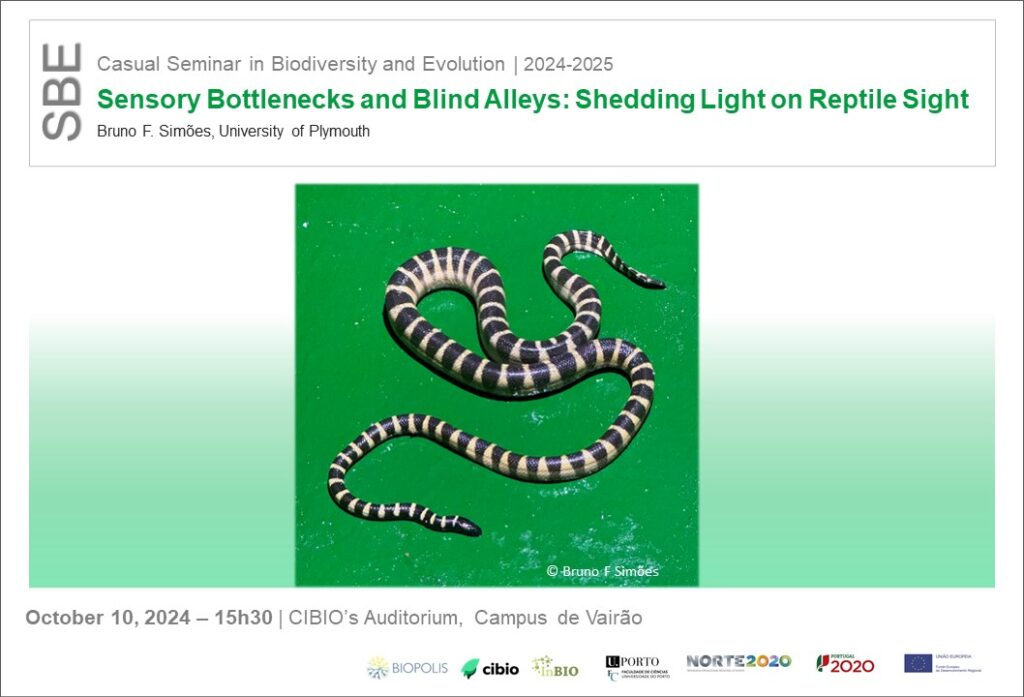Sensory Bottlenecks and Blind Alleys: Shedding Light on Reptile Sight
Bruno F. Simões, University of Plymouth |
October 10, 2024 | 15h30 | Auditorium, Campus de Vairão

Squamata, the clade that comprises lizards and snakes, is one of the biggest major lineages among land vertebrates, with huge ecological and taxonomic diversity. Multiple squamate lineages have undergone independent ecological transitions including switching between diel patterns, epigeal to subterranean habits, and land-to-sea lifestyles. However, despite the vast diversity of ecological niches, multiple ecological transitions and over 250 MY of evolutionary history, the study of the visual system of squamates is still poorly understood. Vision is a key sense for many animals, and the evolution of vision plays an important role in understanding ancient ecologies and is part of long debated theories such as the ancestral diel pattern of geckos or the origin of snakes. With the aim of improving understanding of the evolution and function of the squamate visual system, we generated a large genomic and eye transcriptomic datasets across over 250 squamate species spanning many major lineages and ecotypes. This talk will discuss the evolution of vision among lizards and snakes as it relates to their phylogeny, ecology and exceptional retinal photoreceptor diversity.
More information here